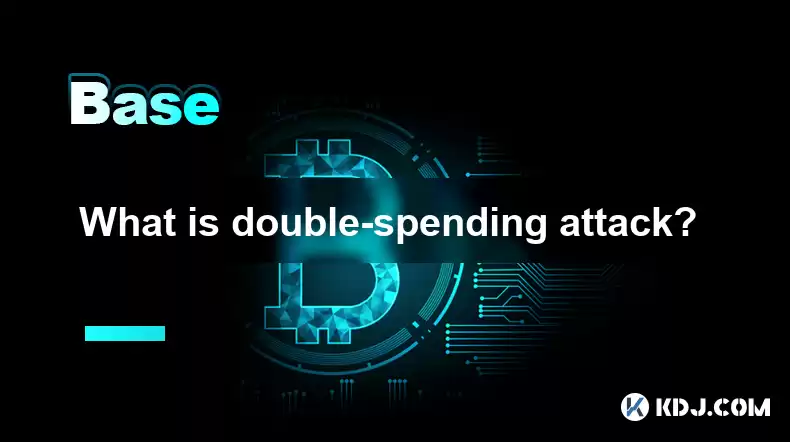-
 Bitcoin
Bitcoin $117500
2.04% -
 Ethereum
Ethereum $3759
3.02% -
 XRP
XRP $3.171
3.30% -
 Tether USDt
Tether USDt $1.000
0.03% -
 BNB
BNB $782.4
2.52% -
 Solana
Solana $187.2
5.62% -
 USDC
USDC $0.0000
0.02% -
 Dogecoin
Dogecoin $0.2380
5.26% -
 TRON
TRON $0.3175
1.07% -
 Cardano
Cardano $0.8227
4.03% -
 Hyperliquid
Hyperliquid $44.50
5.44% -
 Sui
Sui $4.020
10.07% -
 Stellar
Stellar $0.4396
6.28% -
 Chainlink
Chainlink $18.32
4.55% -
 Hedera
Hedera $0.2628
10.71% -
 Bitcoin Cash
Bitcoin Cash $554.8
4.90% -
 Avalanche
Avalanche $24.20
4.60% -
 Litecoin
Litecoin $113.7
2.31% -
 Shiba Inu
Shiba Inu $0.00001413
5.99% -
 UNUS SED LEO
UNUS SED LEO $8.984
0.11% -
 Toncoin
Toncoin $3.326
7.22% -
 Ethena USDe
Ethena USDe $1.001
0.00% -
 Uniswap
Uniswap $10.49
4.56% -
 Polkadot
Polkadot $4.092
4.02% -
 Monero
Monero $326.6
1.30% -
 Dai
Dai $1.000
-0.01% -
 Bitget Token
Bitget Token $4.570
2.49% -
 Pepe
Pepe $0.00001267
5.10% -
 Aave
Aave $297.3
3.10% -
 Cronos
Cronos $0.1344
4.10%
What is double-spending attack?
Double-spending attacks exploit cryptocurrency confirmation vulnerabilities, letting attackers spend the same funds twice. Mitigations include blockchain's immutability, robust mining power, and secure network consensus mechanisms, though complete prevention remains elusive.
Mar 04, 2025 at 10:18 pm

Key Points:
- Definition of a double-spending attack and its implications for cryptocurrency systems.
- How double-spending attacks work, leveraging the confirmation process vulnerability.
- Common methods used to mitigate double-spending attacks, including blockchain technology and mining power.
- Examples of notable double-spending attacks in cryptocurrency history.
- Discussion of prevention strategies and the role of network consensus mechanisms.
- Addressing common misconceptions and providing clarity on attack vectors.
What is a Double-Spending Attack?
A double-spending attack is a type of fraudulent transaction in a cryptocurrency system where a malicious actor attempts to spend the same digital currency twice. This exploits a vulnerability in the confirmation process, aiming to receive goods or services in exchange for cryptocurrency while simultaneously retaining the original funds. The success of this attack hinges on the speed at which transactions are confirmed versus the time it takes to propagate the fraudulent transaction across the network.
How Double-Spending Attacks Work:
The core of a double-spending attack lies in manipulating the transaction confirmation process. The attacker initiates a transaction to a merchant, seemingly transferring funds. Simultaneously, they broadcast a conflicting transaction to a different address, effectively reversing the initial payment. The attacker races against the network's confirmation process, hoping their second transaction is confirmed before the first one. This requires significant computing power and control over a substantial portion of the network's hashing power.
Mitigating Double-Spending Attacks:
Several mechanisms are employed to minimize the risk of double-spending attacks:
- Blockchain Technology: The decentralized and immutable nature of the blockchain makes it extremely difficult to alter past transactions. Once a transaction is added to a block and confirmed by multiple nodes, reversing it becomes computationally infeasible.
- Mining Power: Cryptocurrencies rely on a proof-of-work or proof-of-stake consensus mechanism. A larger mining pool or stake makes a double-spending attack significantly more challenging due to the sheer computational resources required to outpace the honest nodes.
- Transaction Confirmation Times: Longer confirmation times increase the difficulty of double-spending attacks as it gives more time for the network to validate the transaction.
- Network Security: A robust and secure network with many participating nodes helps to prevent malicious actors from gaining control over a significant portion of the network.
Notable Examples of Double-Spending Attacks:
While large-scale double-spending attacks on established cryptocurrencies are rare, smaller attacks have occurred, often targeting less secure or less established cryptocurrencies with lower hash rates. These attacks highlight the importance of robust security measures and highlight vulnerabilities in specific implementations. Analyzing these historical attacks provides valuable insights for improving the security of future cryptocurrency systems.
Prevention Strategies and Consensus Mechanisms:
The effectiveness of preventing double-spending attacks is directly tied to the strength of the underlying consensus mechanism. Proof-of-work (PoW) systems, like Bitcoin, require significant computational power to perform an attack, making it economically infeasible for most attackers. Proof-of-stake (PoS) systems achieve consensus through the stake held by validators, requiring a large stake to influence the network and make a double-spending attack challenging.
Addressing Common Misconceptions:
- Double-spending is always successful: This is false. The probability of success depends on the cryptocurrency's security and the attacker's resources. Stronger networks make successful attacks exponentially harder.
- Only small cryptocurrencies are vulnerable: While less established cryptocurrencies are more susceptible, even larger networks can be targeted, although the cost and difficulty are significantly higher.
- Double-spending is easily prevented: While mitigation techniques exist, a completely foolproof system is elusive. Continuous improvements and adaptation are crucial.
Common Questions and Answers:
Q: Can I be a victim of a double-spending attack?
A: The likelihood depends on the cryptocurrency you're using and the merchant you're interacting with. Using established cryptocurrencies with robust security measures significantly reduces the risk. Merchants who employ multiple confirmation methods also minimize vulnerability.
Q: What happens if a double-spending attack succeeds?
A: The attacker receives the goods or services without actually paying, effectively stealing the funds. The merchant loses the value of the goods or services and the cryptocurrency.
Q: How can I protect myself from double-spending attacks?
A: Use reputable exchanges and wallets, wait for sufficient transaction confirmations before considering a transaction complete, and only use established cryptocurrencies with a large network and strong security. Be wary of merchants who don't implement sufficient confirmation checks.
Q: Are all cryptocurrencies equally vulnerable to double-spending attacks?
A: No. The vulnerability varies depending on the cryptocurrency's consensus mechanism, network size, mining power distribution, and overall security measures. Cryptocurrencies with weaker security protocols are more susceptible.
Q: What is the role of transaction fees in preventing double-spending attacks?
A: While transaction fees don't directly prevent double-spending, they can indirectly discourage attacks by increasing the cost for attackers. Higher fees can make an attack less profitable and thus less likely.
Q: What is the future of double-spending attack prevention?
A: Ongoing research and development in consensus mechanisms, blockchain technology, and network security are continuously improving defenses against double-spending attacks. The evolution of these technologies will likely make such attacks increasingly difficult and less profitable.
Disclaimer:info@kdj.com
The information provided is not trading advice. kdj.com does not assume any responsibility for any investments made based on the information provided in this article. Cryptocurrencies are highly volatile and it is highly recommended that you invest with caution after thorough research!
If you believe that the content used on this website infringes your copyright, please contact us immediately (info@kdj.com) and we will delete it promptly.
- Bitcoin Mining Goes Mobile: Apps & Strategies for Earning in 2025
- 2025-07-27 00:50:12
- Solana Roadmap vs. XRP Rivals: Where's the Market Attention?
- 2025-07-27 01:30:13
- Altcoins Primed for a 2025 Takeover: Undervalued Cryptos to Watch
- 2025-07-27 00:50:12
- Blockchain, Stocks, and Gold: A New Era of Financial Integration
- 2025-07-27 00:30:12
- Crypto Gainers: BlockDAG, VeChain (VET), and the Shifting Sands of Altcoins
- 2025-07-27 01:30:13
- Cryptos to Watch in 2025: Top Analysts' Picks and Meme Coin Mania
- 2025-07-27 01:35:12
Related knowledge

What is the difference between CeFi and DeFi?
Jul 22,2025 at 12:28am
Understanding CeFi and DeFiIn the world of cryptocurrency, CeFi (Centralized Finance) and DeFi (Decentralized Finance) represent two distinct financia...

How to qualify for potential crypto airdrops?
Jul 23,2025 at 06:49am
Understanding What Crypto Airdrops AreCrypto airdrops refer to the distribution of free tokens or coins to a large number of wallet addresses, often u...

What is a crypto "airdrop farmer"?
Jul 24,2025 at 10:22pm
Understanding the Role of a Crypto 'Airdrop Farmer'A crypto 'airdrop farmer' refers to an individual who actively participates in cryptocurrency airdr...

What is the difference between a sidechain and a Layer 2?
Jul 20,2025 at 11:35pm
Understanding the Concept of SidechainsA sidechain is a separate blockchain that runs parallel to the main blockchain, typically the mainnet of a cryp...

What is the Inter-Blockchain Communication Protocol (IBC)?
Jul 19,2025 at 10:43am
Understanding the Inter-Blockchain Communication Protocol (IBC)The Inter-Blockchain Communication Protocol (IBC) is a cross-chain communication protoc...

How does sharding improve scalability?
Jul 20,2025 at 01:21am
Understanding Sharding in BlockchainSharding is a database partitioning technique that is increasingly being adopted in blockchain technology to enhan...

What is the difference between CeFi and DeFi?
Jul 22,2025 at 12:28am
Understanding CeFi and DeFiIn the world of cryptocurrency, CeFi (Centralized Finance) and DeFi (Decentralized Finance) represent two distinct financia...

How to qualify for potential crypto airdrops?
Jul 23,2025 at 06:49am
Understanding What Crypto Airdrops AreCrypto airdrops refer to the distribution of free tokens or coins to a large number of wallet addresses, often u...

What is a crypto "airdrop farmer"?
Jul 24,2025 at 10:22pm
Understanding the Role of a Crypto 'Airdrop Farmer'A crypto 'airdrop farmer' refers to an individual who actively participates in cryptocurrency airdr...

What is the difference between a sidechain and a Layer 2?
Jul 20,2025 at 11:35pm
Understanding the Concept of SidechainsA sidechain is a separate blockchain that runs parallel to the main blockchain, typically the mainnet of a cryp...

What is the Inter-Blockchain Communication Protocol (IBC)?
Jul 19,2025 at 10:43am
Understanding the Inter-Blockchain Communication Protocol (IBC)The Inter-Blockchain Communication Protocol (IBC) is a cross-chain communication protoc...

How does sharding improve scalability?
Jul 20,2025 at 01:21am
Understanding Sharding in BlockchainSharding is a database partitioning technique that is increasingly being adopted in blockchain technology to enhan...
See all articles

























































































